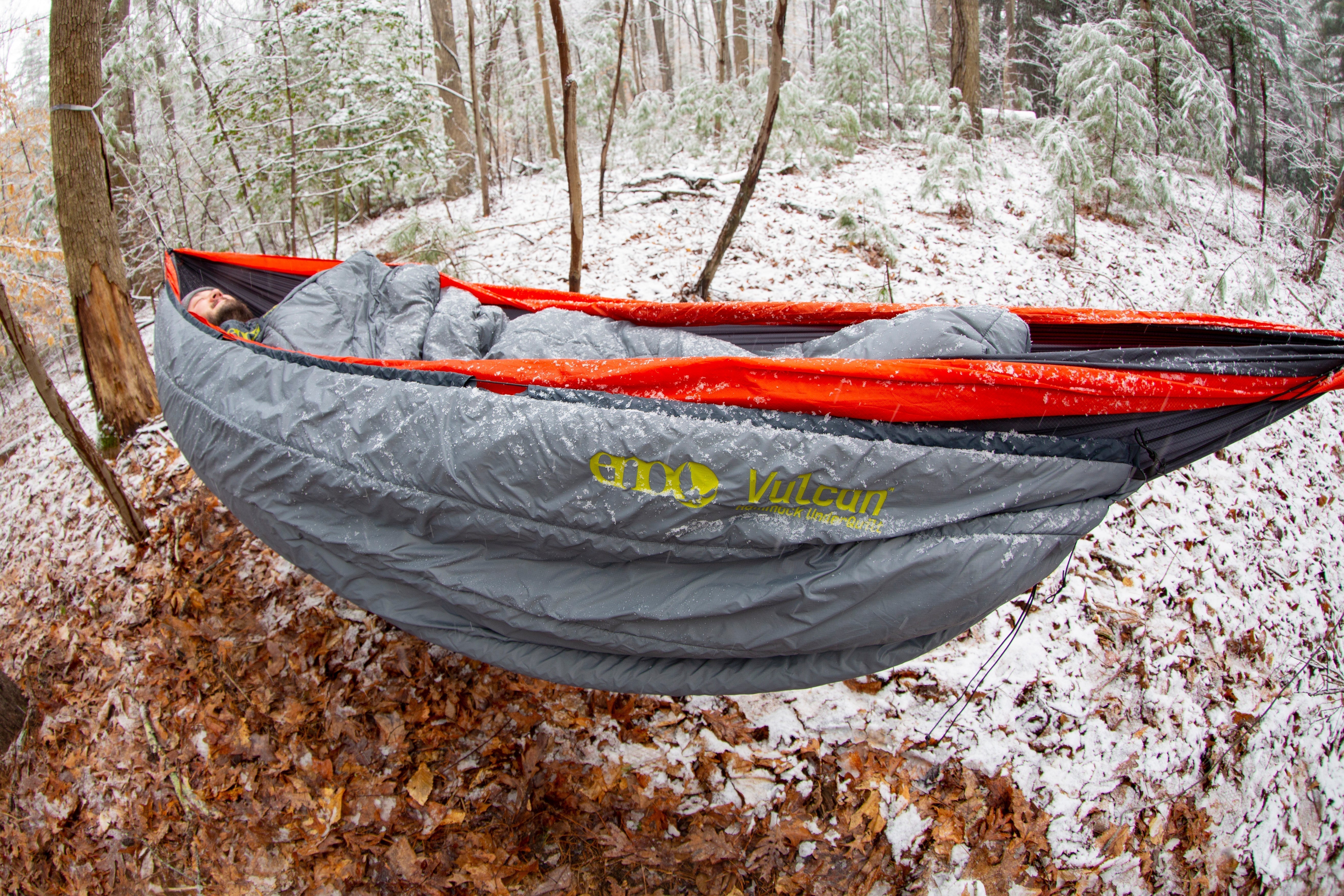Written by Anna Fletcher
Stick to the 3-layer rule. When it comes to dressing for the cold, it’s important to stay both warm and dry. The best way to do this is to wear 3 layers of clothing – a base layer, a middle layer and an outer layer. Your base layer is the layer closest to your skin. Choose a fabric like synthetic and merino wool (NOT cotton! – Cotton takes a long time to dry and loses its insulating qualities as it gets wet) that dries quickly and wicks moisture up to the outer layers where it is evaporated, keeping you nice and dry. When you’re camping in the snow, it’s best to have 2 base layers – a lightweight one and a midweight one. Next is your middle layer, which serves as insulation to retain body heat. Down or fleece works best for this layer (again, stay away from cotton). Finally, your outer layer should be waterproof, windproof and well ventilated. Laminates, such as Gore-Tex and eVent, are prime for warmth and breathability, as they are designed to allow sweat to escape as moisture vapor instead of trapping it underneath the fabric. Polyurethane-coated fabrics are less-expensive alternatives to laminates and are equally as waterproof, though they are a bit less breathable.
Maintain good circulation. When you have poor blood flow to certain parts of your body, you will have a very difficult time getting warm. Make sure that you don’t wear too many pairs of socks, as each extra one will fit tight on your foot. If the circulation in your feet becomes constricted, your feet will be cold no matter how many pairs you have on. It’s best to wear a thin, breathable pair of socks under a pair of thick, cushiony socks. Make sure that you boot laces are not tied too tight – this could constrict blood circulation as well. Also, wear gloves and liners that are not too tight, as they can prevent your hands from warming up. A good tip for helping your hands and feet stay toasty, especially in the morning, is to sleep with your gloves, liners, socks and boot insoles in your sleeping bag.
Drink lots and lots of water. Dry winter air dehydrates you faster than warmer air for various reasons. Mainly, you just don’t tend to get thirsty when you’re cold. And when you don’t feel thirsty, you don’t drink water and can dehydrate very quickly. It’s vitally important to drink tons of water in cold temperatures because water allows your body to generate heat, your body is working harder under the weight of all your extra clothing, and your sweat is evaporating much more rapidly in cold, dry air. Checking your urine periodically to see how clear it is a good way to make sure that you are properly hydrated. And to keep your water from freezing, put your water bottle in a wool sock, insulated bottle sleeve or a DIY cell foam sleeve. Mixing the water with something like lemonade or Gatorade will also cause it to freeze at a lower temperature than plain water.
Choose your campsite wisely. Pick a site with a lot of trees that is as sheltered from the wind as possible. If your only option is an exposed campsite on snow, dig a 1-2′ deep hole in which to put your tent, which will reduce the amount of wind that blows against your tent. Dig a pit at the entrance of the same depth to make getting in and out of the tent easier. Make sure to pack down the snow before you set your tent up – otherwise, your body will melt a deformation in the powder, which will refreeze and be very uncomfortable to sleep on. Also, avoid three-season tents, as they may be too ventilated and not sturdy enough to handle blustery winter winds and snow buildup. If you know what’s right and decide to hammock camp, find a spot with as many trees as possible, because hanging your tarp among trees will help block the wind. A tarp like the HouseFly, which has silicone impregnated nylon sides, overlapping doors and the most coverage of all ENO’s tarps, is great for keeping out any winter storm that may come your way. And don’t forget your sleeping pad, underquilt and topquilt! With all the right components, you’ll be swinging away in toasty bliss.
Be smart with your food. When you winter camp, your body will need as much as twice the calories it usually needs. Choose foods that will provide your body with energy. Proteins like jerky (try Threshold Provisions’ salmon jerky – an awesome source of amino acids and omega-3’s) and dehydrated eggs are great for bringing along on trips. Nuts containing fats, and carbohydrates like breads, oatmeal, dried fruits and candy will also boost your energy. If you’re backpacking, snack on your food throughout the day, taking short breaks or munching as you go instead of taking long lunch breaks. This will keep you from cooling down too much and then needing to adjust and put on more layers. Carry a small insulated thermos of hot cider, chocolate or soup on your pack hip belt so that you can take a sip here and there to warm up. Also, having a late-night snack before you go to bed will give your body enough fuel to generate heat during the cold night.





Share:
Tips For Backpacking With Your Dog
Ultralight Backpacking